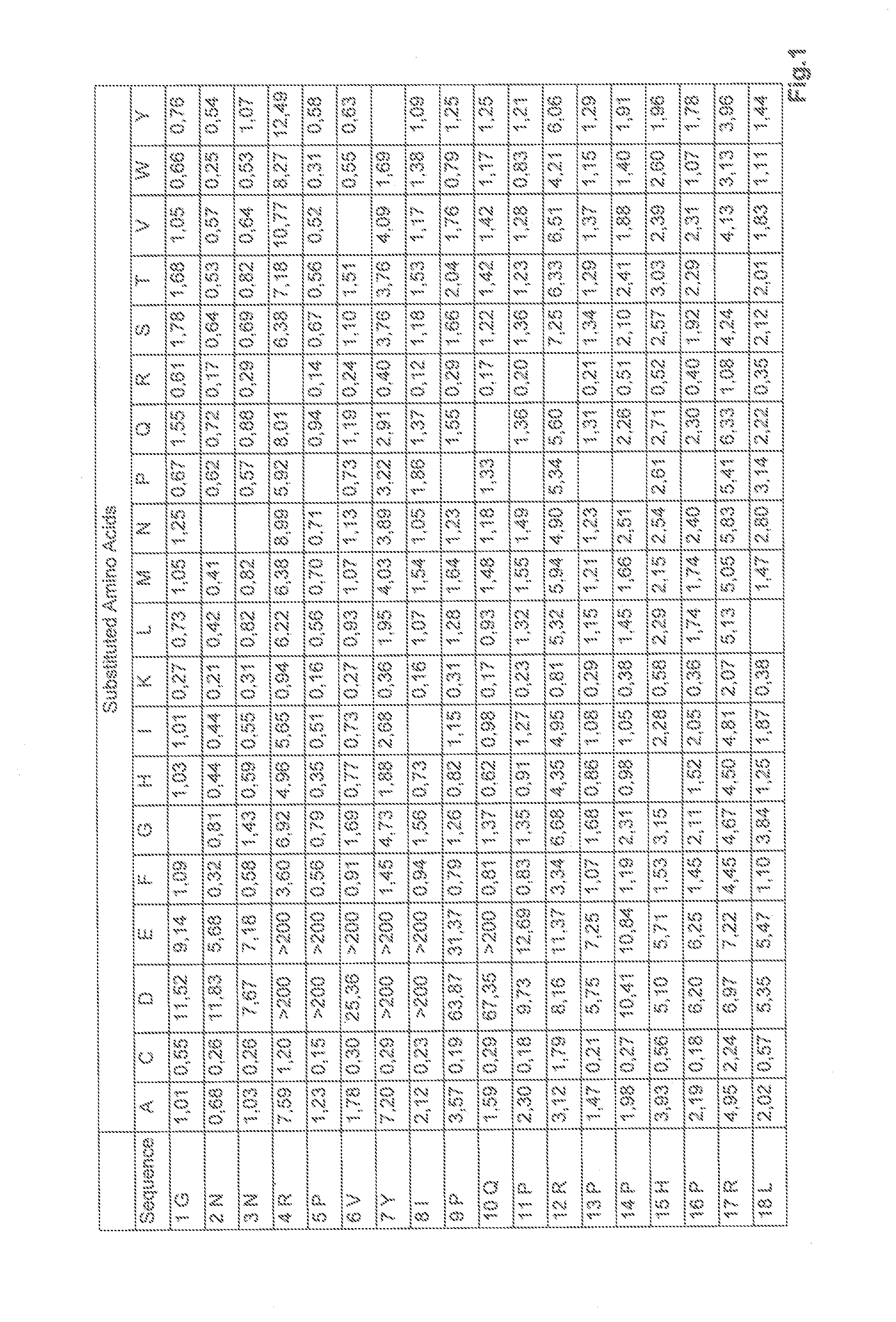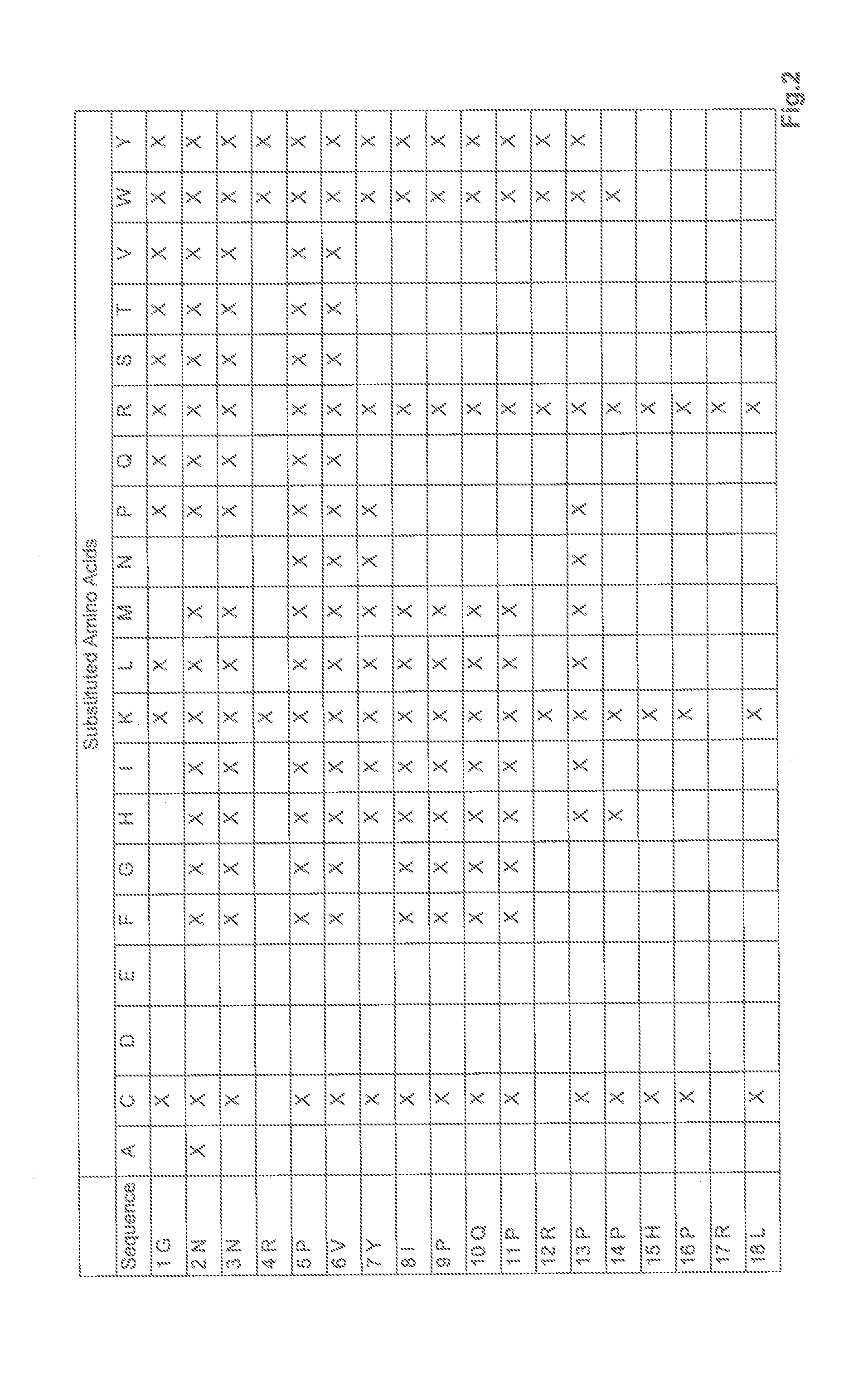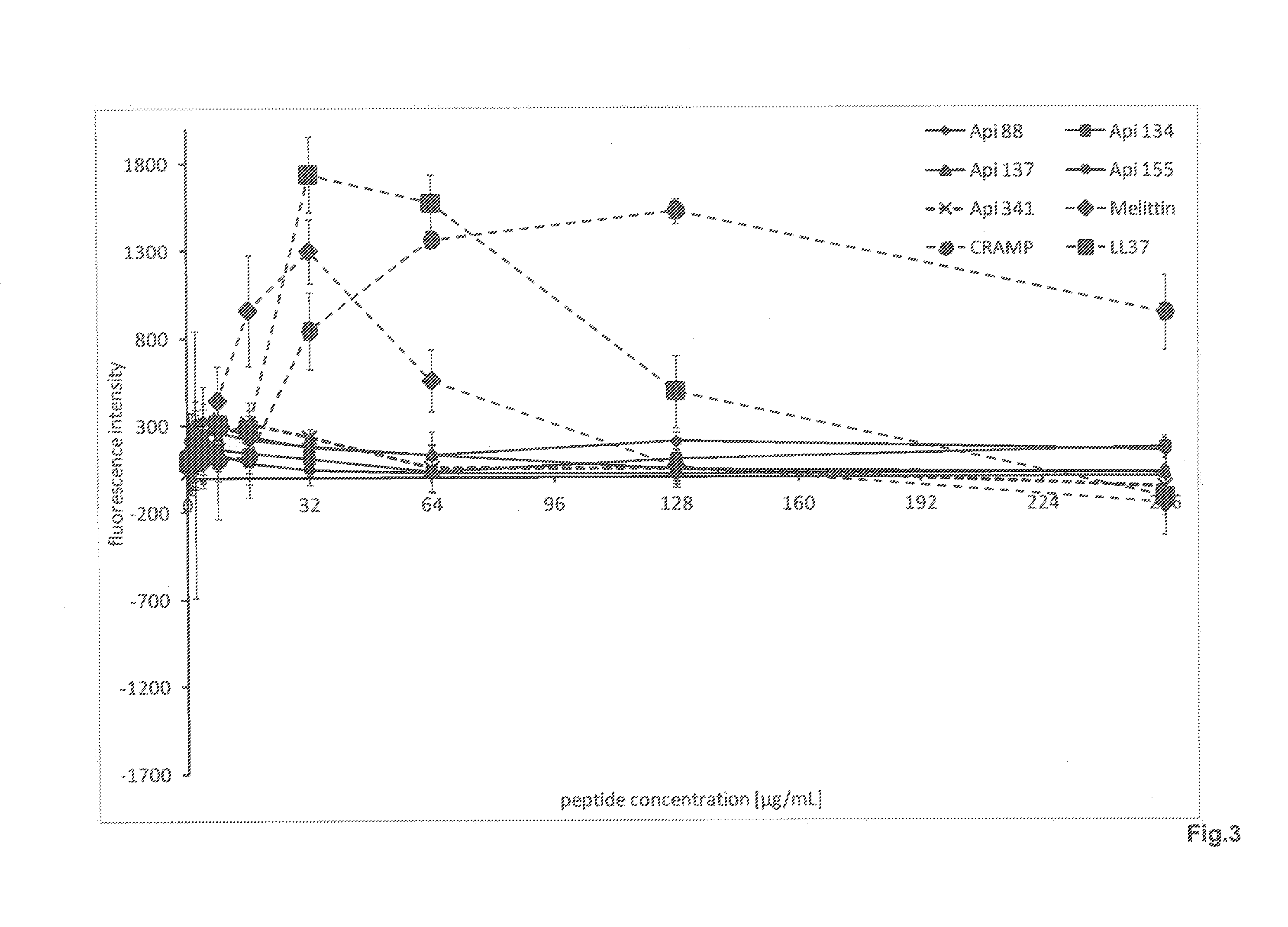Modified apidaecin derivatives as antibiotic peptides
a technology of modified apidaecin and derivatives, which is applied in the direction of peptides, peptide/protein ingredients, immunoglobulins, etc., can solve the problems of limiting the suitability of potential pharmaceutical agents, unable to kill off cells, and growing problems such as the development of serious bacterial and fungal infections
- Summary
- Abstract
- Description
- Claims
- Application Information
AI Technical Summary
Benefits of technology
Problems solved by technology
Method used
Image
Examples
example 1
Substitution Analysis by Means of Peptide Array
[0172]To optimize the antimicrobial activity of apidaecin 1b, a substitution analysis was carried out using this peptide (according to SEQ ID No. 2). The substitution library was synthesized by means of SPOT synthesis, and was analyzed for antibacterial activity against Pseudomonas aeruginosa by means of bioluminescence assay.
[0173]The SPOT synthesis of the peptide libraries was carried out on Whatman 50 filter paper (Sigma-Aldrich, Germany) measuring 19×29 cm by means of the Fmoc method and a SPOT synthesizer (Intavis AG, Germany) (according to Reineke U et al. 2001). The luminescence screening method that was used is based on the publication by Hilpert and Hancock (Hilpert, 2007). The peptides synthesized on the membrane were split off and the peptide spots were punched out of the peptide membrane using a hole punch, and were transferred to a 96-well microtiter plate (Corning, USA), after which 200 μL distilled water per well was add...
example 2
Determining Minimum Inhibitory Concentrations and Growth Kinetics
[0176]The minimum inhibitory concentrations (MIC) of the peptides were determined in a double assay of triplicates using a positive control sample (gentamycin) and a negative control sample (0.9% NaCl solution), according to a modified protocol from Wiegand et al. (Wiegand, 2008).
[0177]For this purpose, the peptides were dissolved in water and were diluted in a double dilution series with 1 / 8 MH (eight-fold diluted Mueller-Hinton-Medium—2.6 g / L, Merck) in sterile 96-well, plates (Greiner Bio-One GmbH) in twelve dilution steps from 128 μg / mL to 62.5 ng / mL. Overnight cultures were adjusted using ⅛ MHB to approximately 1.5×107 colony forming units per mL. Of these, 50 μL of peptide solution per well was mixed with 50 μL bacteria solution each to obtain an initial concentration of 4×10 bacteria per well. After 20 hours of incubation at 37′C, the absorption was determined at 595 nm (microplate reader, Wallac Victor3, Perkin...
PUM
| Property | Measurement | Unit |
|---|---|---|
| nucleic acid | aaaaa | aaaaa |
| size | aaaaa | aaaaa |
| hydrophilic | aaaaa | aaaaa |
Abstract
Description
Claims
Application Information
 Login to View More
Login to View More - R&D
- Intellectual Property
- Life Sciences
- Materials
- Tech Scout
- Unparalleled Data Quality
- Higher Quality Content
- 60% Fewer Hallucinations
Browse by: Latest US Patents, China's latest patents, Technical Efficacy Thesaurus, Application Domain, Technology Topic, Popular Technical Reports.
© 2025 PatSnap. All rights reserved.Legal|Privacy policy|Modern Slavery Act Transparency Statement|Sitemap|About US| Contact US: help@patsnap.com



